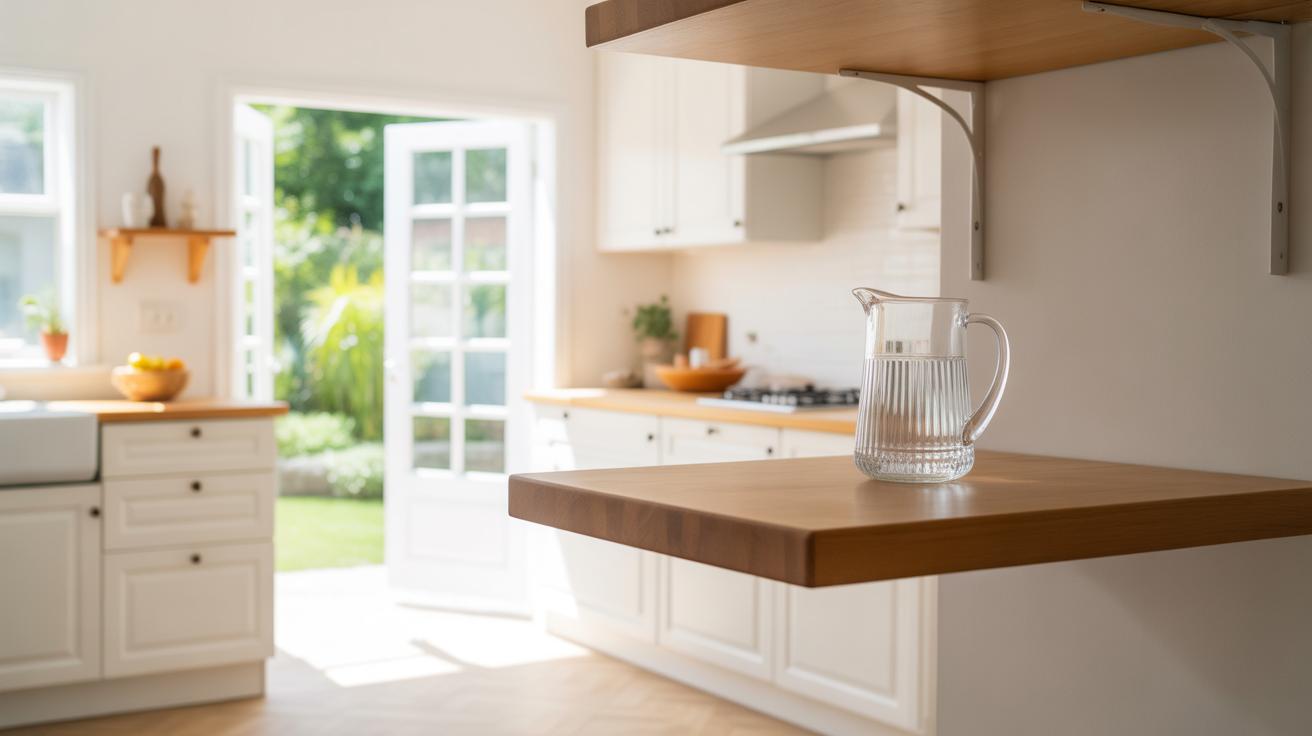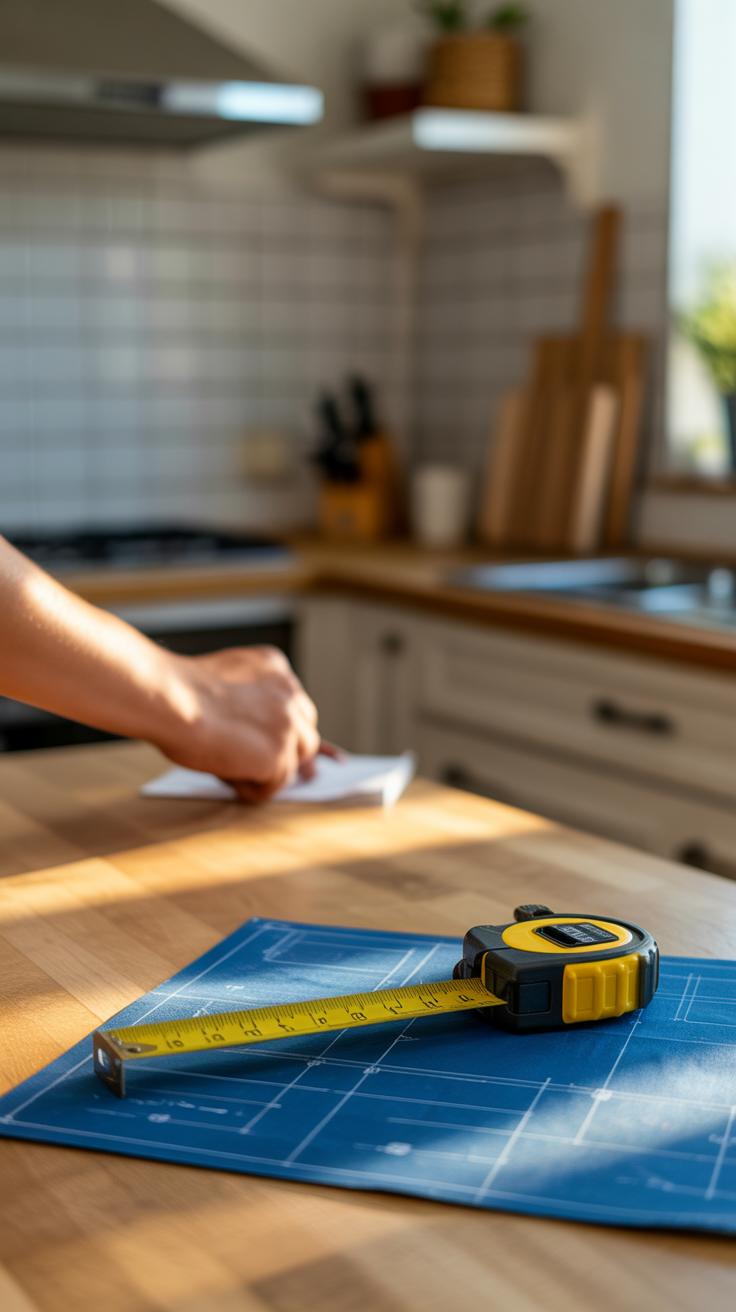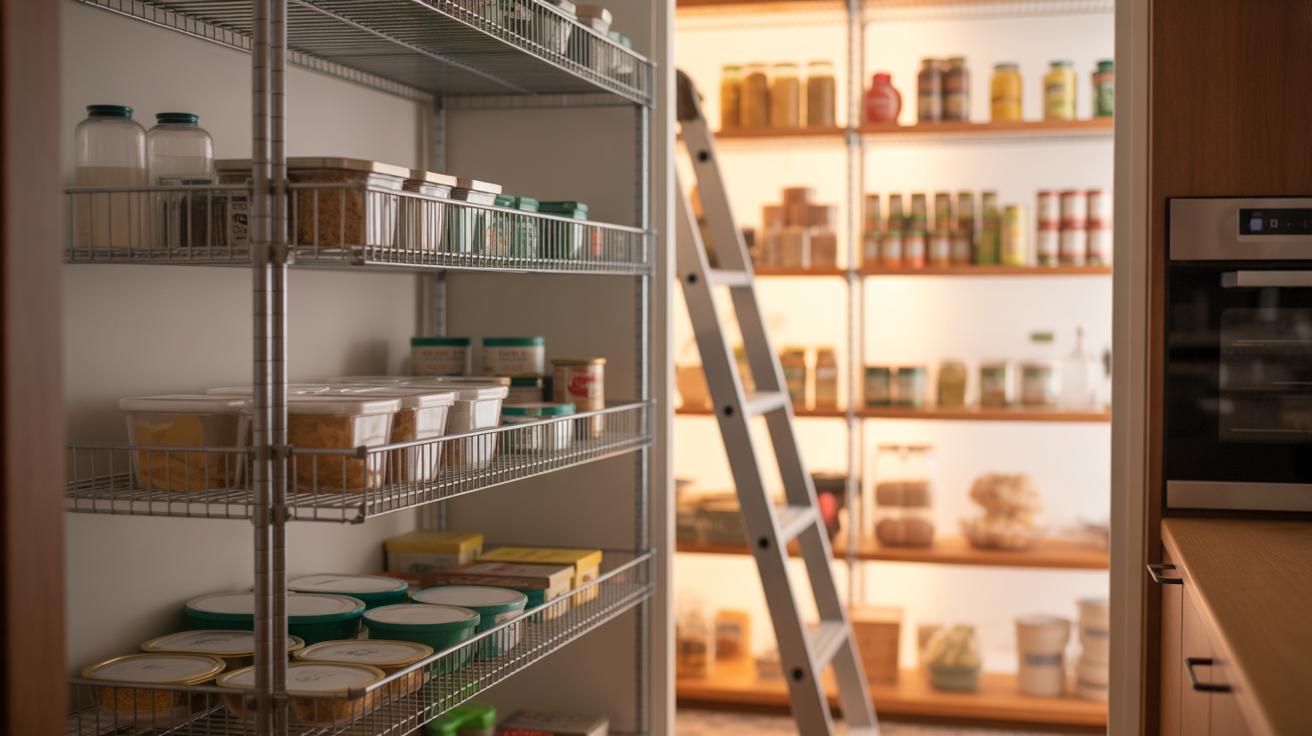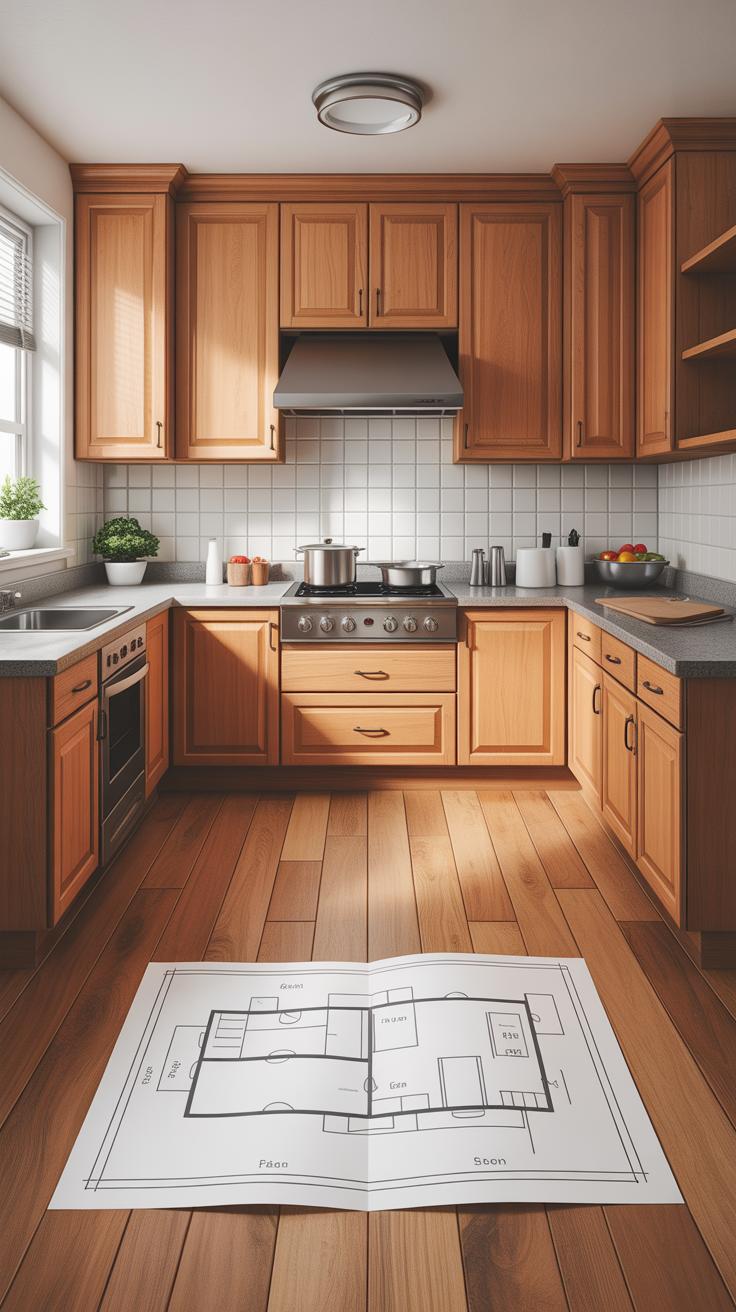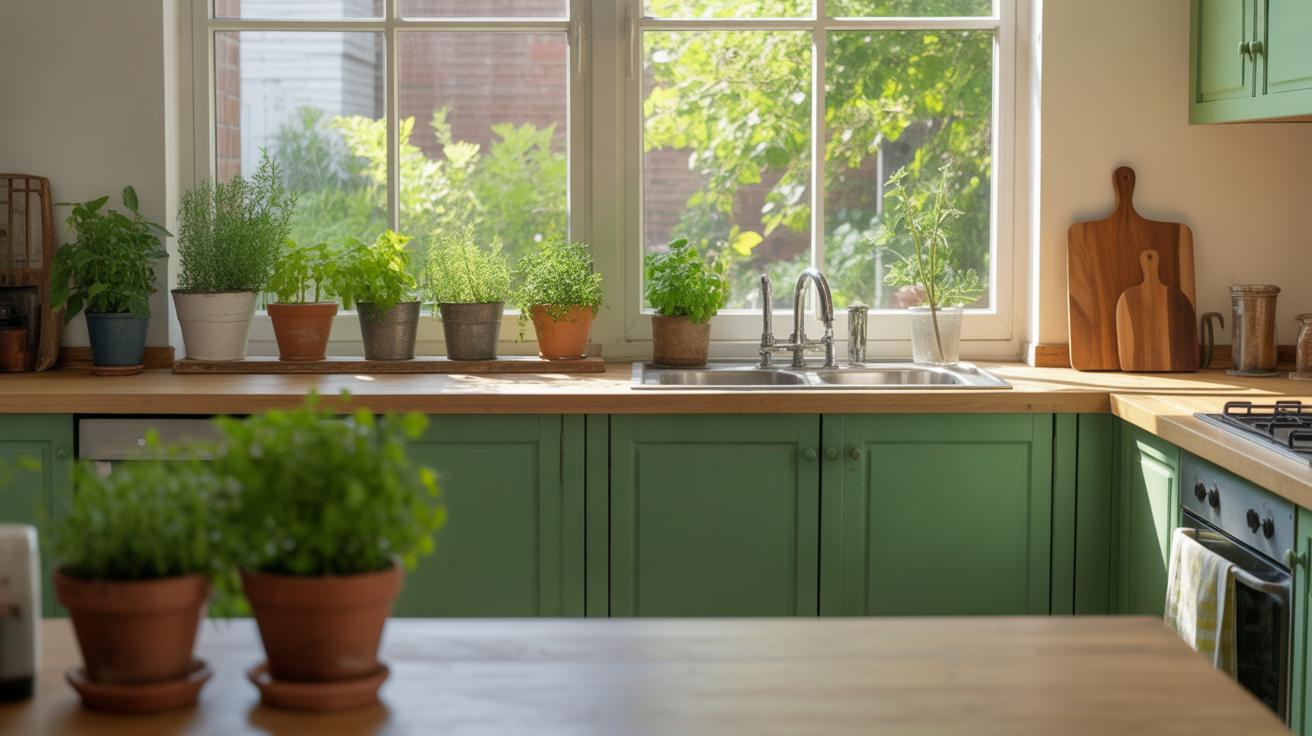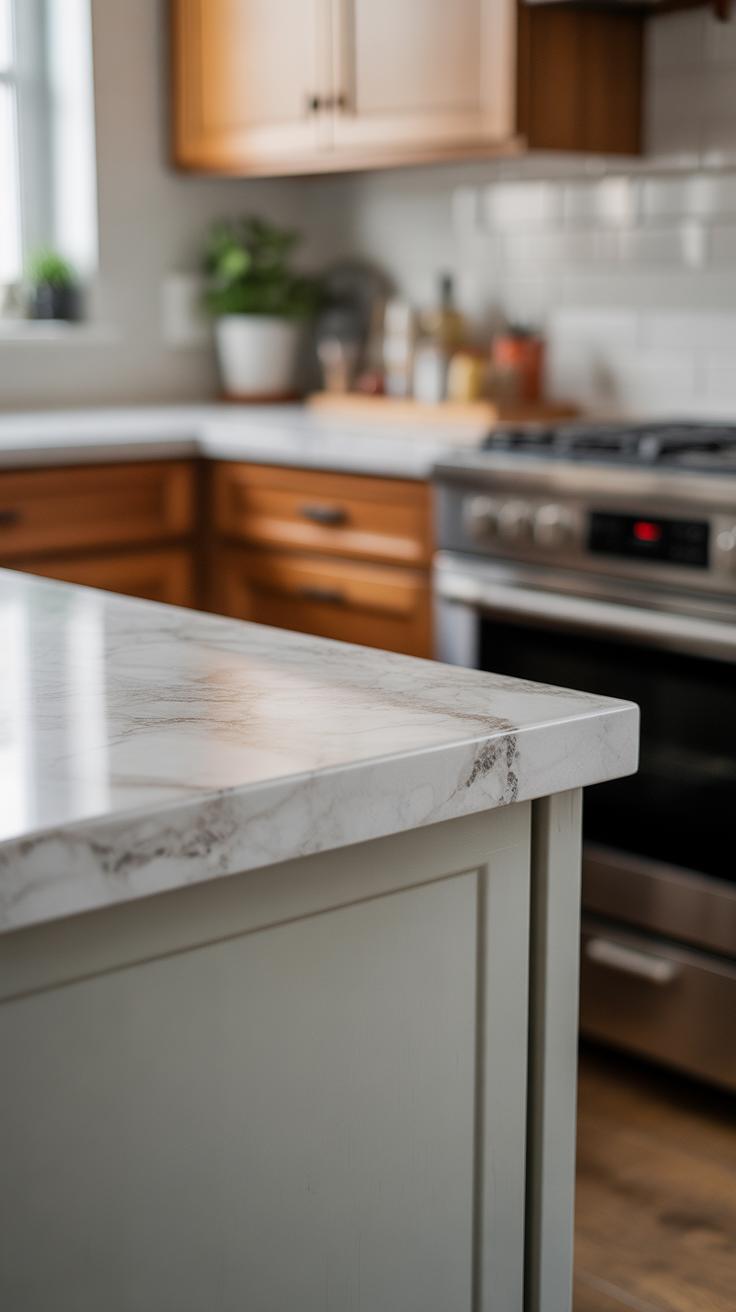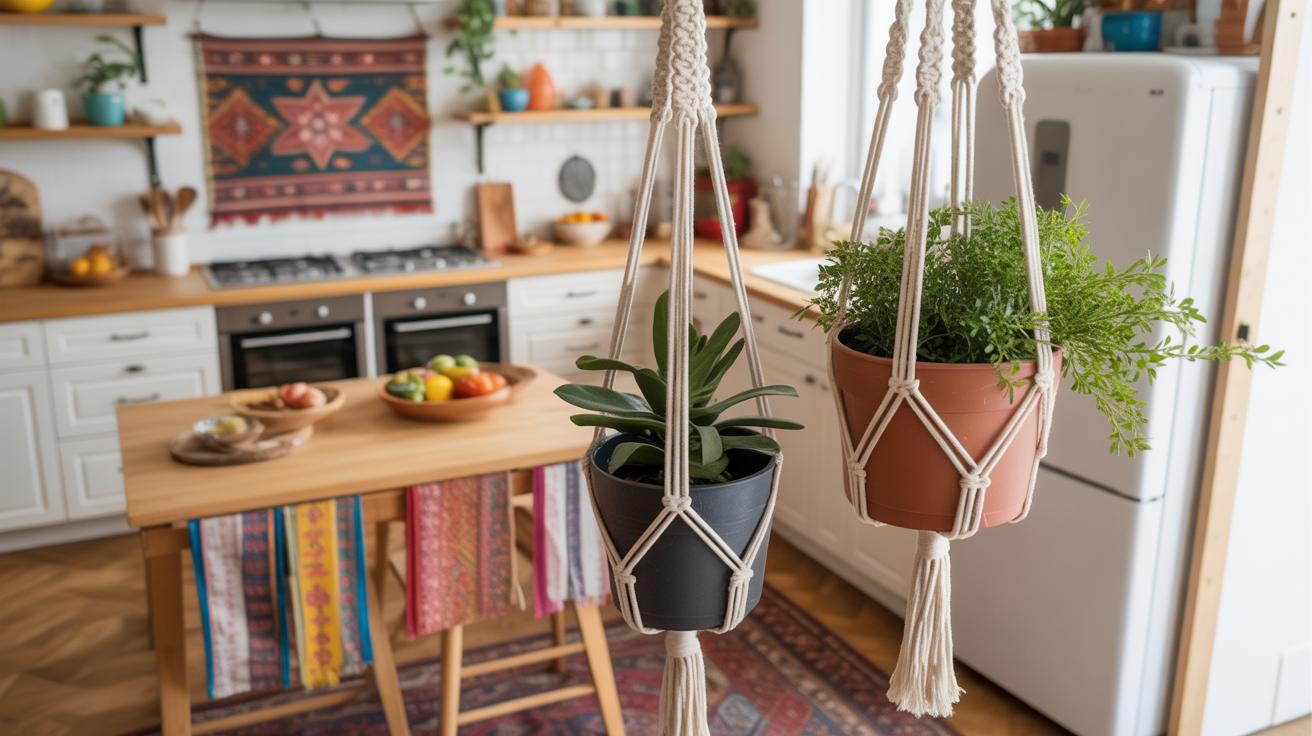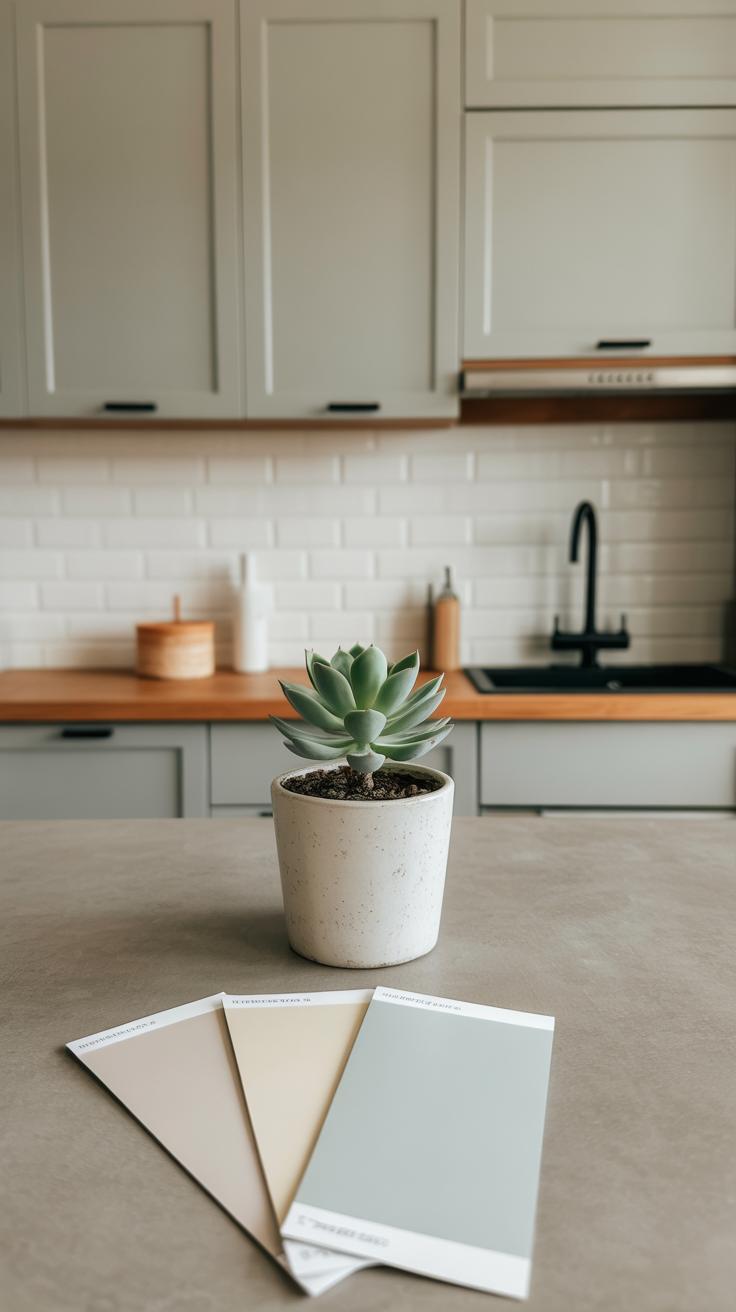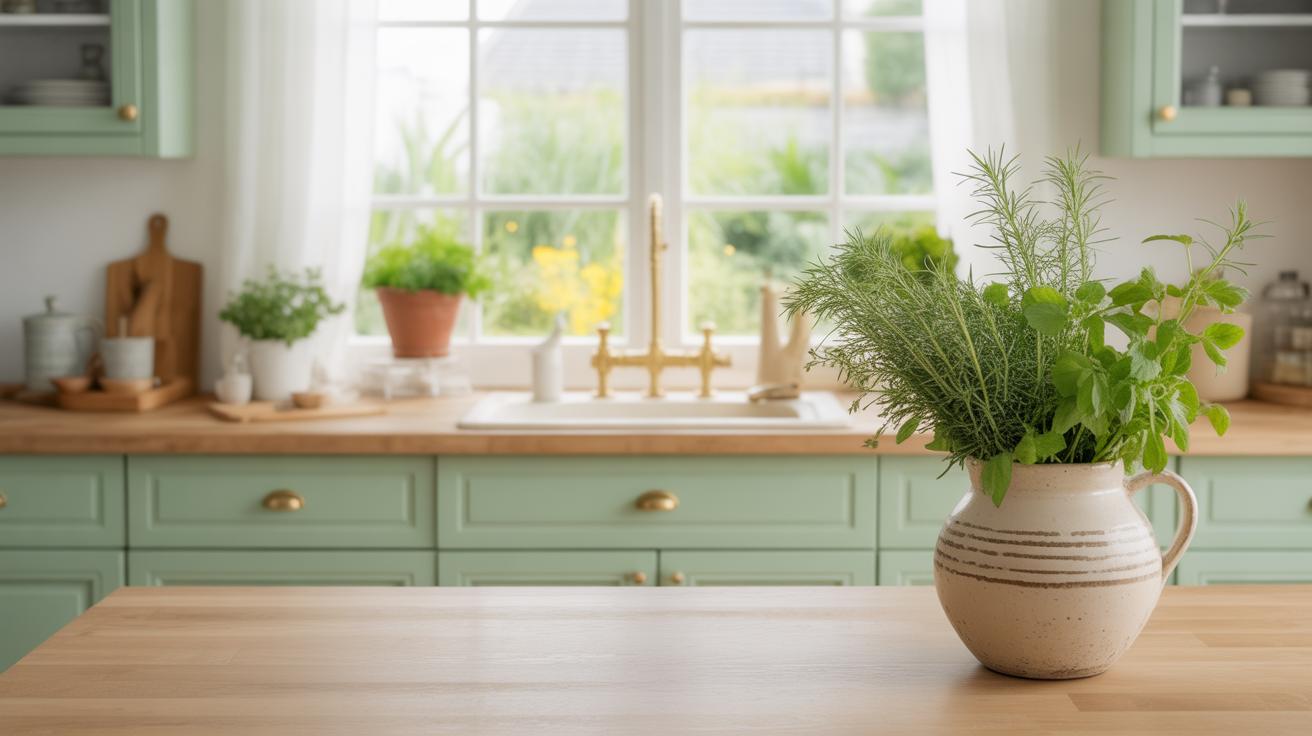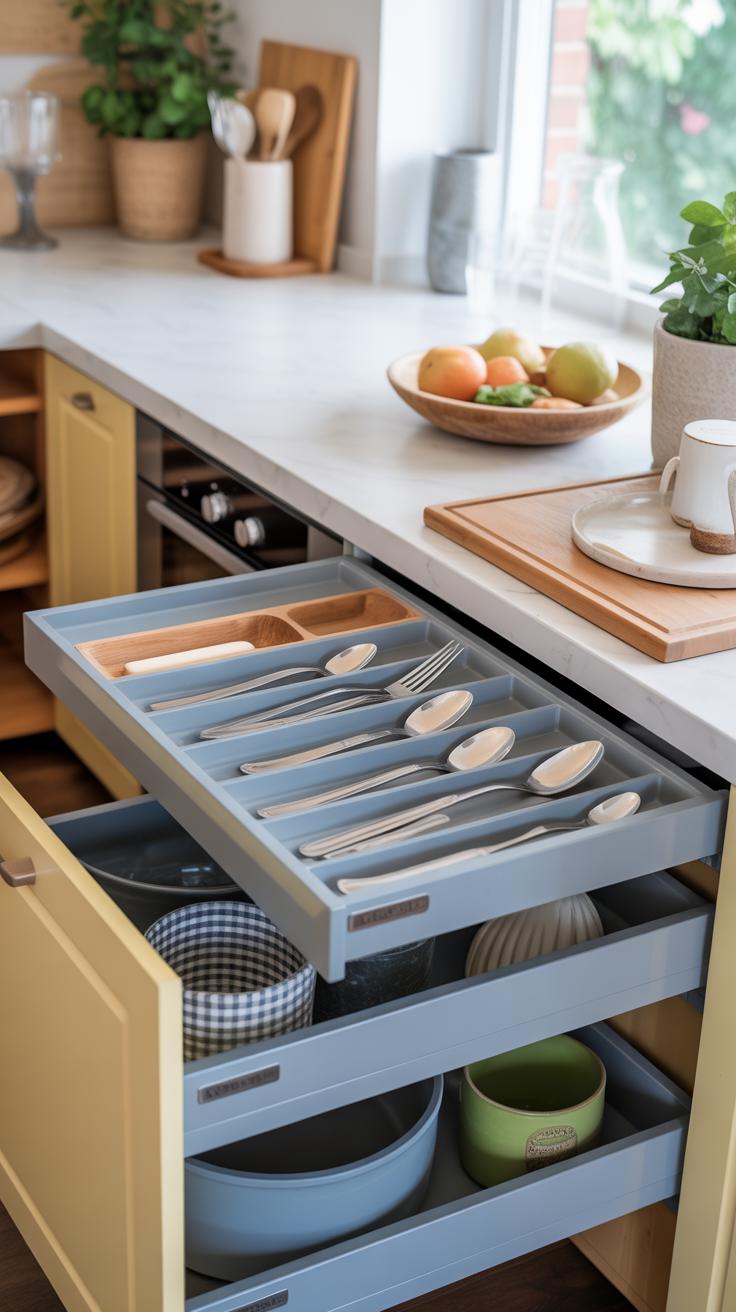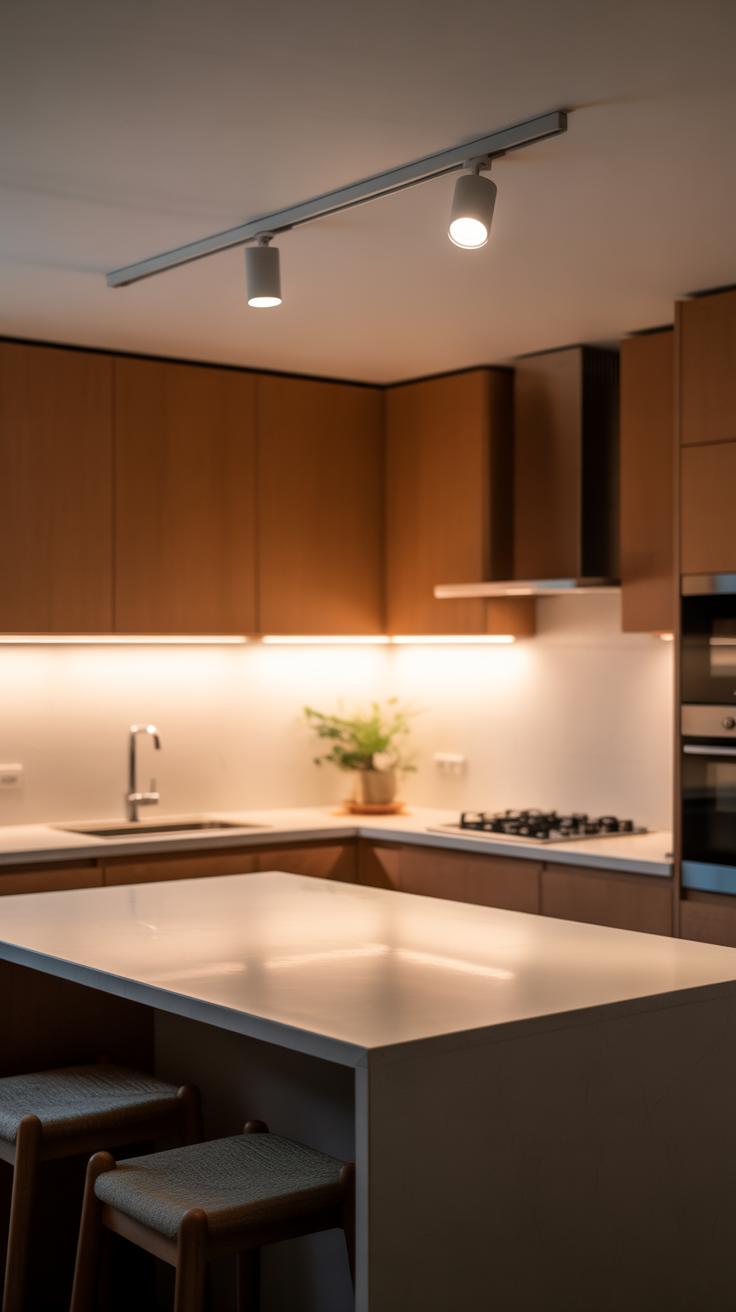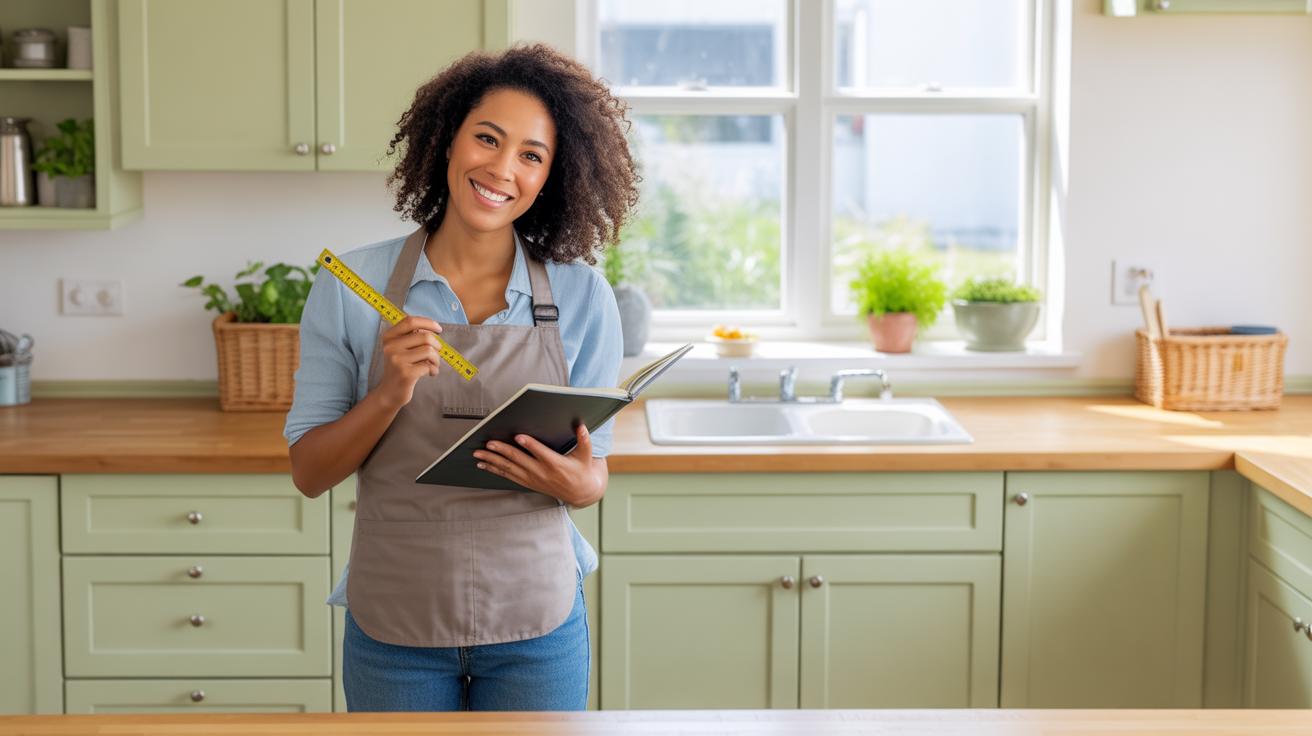Introduction
Simple kitchen design ideas can help you create a space that is both functional and pleasing to the eye. When planning your kitchen, focus on easy-to-execute designs that improve the look of your home without overwhelming it. The goal is to offer practical and attractive solutions that suit your daily needs.
This article will explore straightforward kitchen design concepts, covering everything from layout to decoration. You will find helpful tips that make your kitchen feel organized and enjoyable. Whether you are updating an old kitchen or starting fresh, these ideas will guide you in making smart choices.
Measuring and Mapping Your Kitchen for Simple Design
Before you jump into picking colors or appliances, you really need to understand your kitchen’s actual size and shape. This is more than just knowing the square footage. Think about where your counters, doors, and windows fall. It might sound a bit tedious, but measuring accurately changes how your kitchen feels and functions.
Start with a tape measure or even a laser measure if you have one—these can make things simpler. Measure the length and width of the floor space, but don’t stop there. Take note of the height too, since tall ceilings or low beams can affect cabinet choices and lighting options.
Create a rough sketch on paper or use free online tools. Mark permanent features like sinks, stoves, and power outlets. This “map” will help when deciding where to position storage or appliances. For example, knowing the distance between your sink and fridge might save you a lot of moving around later.
When I first mapped out my kitchen, I realized my initial plan for a large island wouldn’t fit. It was frustrating, but this step saved me from bigger mistakes down the road. So yes, measuring takes time, but it means you’re not guessing. You get clarity, and that’s a win for any simple design.
Using Natural Light to Your Advantage
Natural light changes everything in a kitchen. It affects mood and how you see colors and textures while cooking or cleaning. A dark kitchen often feels cramped and less inviting. On the other hand, sunlight can make a small kitchen seem more open and fresh.
Take note of where the windows are and what time of day they catch the most sun. Is the light bright in the morning or soft in the afternoon? This influences where you might want to place your eating area or countertop workspace.
If your kitchen doesn’t get much light, think about how to enhance what’s there. Light-colored walls reflect daylight better. Mirrors or glossy tile backsplashes bounce light around the room. Sometimes simply removing heavy curtains can uncover a better flow of natural light—something I overlooked until recently.
Even small changes count. For example, avoid placing bulky objects near windows. Let the light come in free and clear. In some kitchens, you might consider installing skylights or adding a glass door—not always an option, I know, but it’s worth considering if you’re dealing with a dull space.
Using light thoughtfully has a double benefit: it helps your kitchen look good and makes it easier to work in. Thinking about light isn’t just about style—it’s practical too.
Choosing a Functional Layout
When it comes to simple kitchen design, the layout can make or break the whole experience. Two popular choices stand out for their straightforwardness and practicality: the L-shape and the galley layouts. Each offers its own set of advantages, depending on the size and shape of your kitchen space.
L Shape Kitchen Layout Benefits
The L-shape layout often feels like a natural fit for many kitchens. It places cabinets and appliances along two adjacent walls, forming a corner that lets you move around easily. This arrangement tends to free up more open floor space, which can be a relief if you prefer less clutter or need room to maneuver. I’ve noticed that with this setup, cooking flows better—you’re not constantly backtracking.
The corner design also lends itself well to dividing tasks, like separating prep areas from cooking zones. And when you get guests, it’s easier to stay involved in conversations without turning your back completely to the living or dining area. Still, the benefits might depend a lot on how much space you actually have—if the walls are too long or short, things can get awkward.
Galley Layout for Small Kitchens
The galley layout, with its two parallel walls of cabinetry, often gets overlooked but can work surprisingly well in tight kitchens. It’s a setup that naturally limits walking distances between workstations. The simplicity of this design means fewer distractions and more focus on the task at hand.
In small kitchens, it can feel cramped, sure, but when arranged thoughtfully, it streamlines the workflow. For instance, placing the stove on one side and the sink on the other keeps things balanced. I’ve seen kitchens where this layout actually maximizes storage, too, since every inch counts. Yet, sometimes it feels like you don’t have much room for more than one person at a time, which might be a downside if you like to cook with company.
Selecting Simple and Durable Materials
When picking materials for a simple kitchen, durability and ease of maintenance often take center stage. You want something that won’t demand constant attention but still looks decent enough over time. It’s a bit of a balancing act, really.
Cabinet Material Choices
MDF (medium-density fiberboard) tends to come up a lot in these discussions. It’s affordable and handles paint or laminate finishes well, making it flexible for various styles. Though not as tough as solid wood, MDF resists warping in humid kitchen environments better, which might matter if you live somewhere damp.
Laminate cabinets offer another practical choice, especially if you prefer something low-fuss. They can be wiped clean quickly and don’t chip as easily as you might expect. The downside? They sometimes give off a less natural vibe, but honestly, that’s a matter of taste.
Countertop Options for Easy Cleaning
When it comes to countertops, you’ll find laminate and quartz as solid contenders for low-maintenance surfaces. Laminate countertops remain a budget-friendly option and generally withstand everyday wear and tear well enough. Stains can happen, but a simple wipe usually does the trick.
Quartz stands out because it resists scratches and stains almost effortlessly. It feels a bit more upscale, though the price can nudge you into thinking twice. Still, if your kitchen sees heavy use, quartz might save you from annoying repairs down the line.
So, what’s your priority? Do you lean toward fuss-free upkeep or something with a bit more character? Either way, sticking with basic, resilient materials lets you keep things simple without sacrificing practicality.
Color Schemes That Simplify Your Kitchen
Color can change how you experience your kitchen in subtle but powerful ways. Choosing the right hues isn’t just about style—it shapes how open or cramped the space feels and can even affect your mood while cooking or cleaning.
Light Colors to Open Up Space
Whites and soft pastels often make kitchens look bigger and cleaner. I’ve noticed that rooms painted in these shades tend to feel airier, even when the floor space is limited. These colors reflect natural light better, which can brighten up shadowy corners.
Light colors work well on walls, cabinets, and backsplashes. They create a calm backdrop that feels almost effortless. But sometimes, plain white might seem a bit sterile or cold—pastels like pale blue or mint add warmth without making the kitchen look cluttered. It’s a small choice that makes a big difference if you want simplicity with a little personality.
Adding Contrast with Simple Accents
To keep your kitchen from feeling too one-dimensional, small touches of darker colors help. Think about dark handles on light cabinetry or a matte black faucet. These details draw the eye but don’t crowd the space.
Using these contrasts makes the kitchen feel put together but not overdone. You don’t need a rainbow of colors; a couple of accents can add a lot of visual interest. A dark drawer pull or even colored fixtures in deep green or navy can break the monotony thoughtfully. It’s like having that one piece of art in an otherwise white room—it just works without getting busy.
Have you ever thought how tiny color shifts change the way you interact with your kitchen? Sometimes the simplest changes make cooking and cleaning feel less like a chore and more like… well, something you don’t mind doing.
Maximizing Storage Without Clutter
Using Vertical Storage
When counter space is tight, looking up can really help. Installing shelves on empty walls gives you room for jars, cookbooks, or even decorative plates. Hooks offer a similar trick—think hanging mugs or utensils. It might seem like simple stuff, but shifting storage off the counters can change how the kitchen feels. Your space opens up. You don’t feel overwhelmed by clutter. I once tried a series of narrow shelves above my stove, and despite worries they’d make the area look busy, they actually freed up my counters and made cooking flow smoother. It makes you wonder why we don’t use walls more often in kitchens.
Smart Use of Drawers and Cabinets
Drawers and cabinets can get messy fast if left unchecked. Dividers, trays, or baskets inside them help keep things from becoming a jumble. It pays to group similar items together—spices in one spot, baking tools in another. Sometimes, just tidying up every couple of months prevents things from piling up. I kind of like the challenge of fitting everything neatly inside my drawers, though it can feel a bit fiddly at times. Ever tried stacking pots inside each other with a thin cloth in-between? That’s a small trick that makes a big difference. Does organizing really reduce hassle, or does it just feel like more work upfront? I’m torn myself. But drawer inserts certainly make finding stuff easier, which is a relief when you’re mid-recipe and time is ticking away.
Choosing Appliances for a Simple Kitchen
Compact Appliances for Small Spaces
In a simple kitchen, appliances need to fit the space while still doing their job well. You don’t have to cram in the biggest fridge or oven if it clutters your counters or squeezes your movement. Compact appliances are designed to offer just what you need without overwhelming your kitchen.
Think about slim refrigerators, drawer dishwashers, or two-burner cooktops instead of larger models. Many brands now offer appliances that stack or tuck away neatly, making it easier to keep a clean countertop. I once switched to a smaller toaster oven—it saved so much room, and I rarely cook big batches, so it works just fine.
Placement also matters. Keep frequently used items within arm’s reach to avoid unnecessary steps. Could the microwave fit into a cabinet instead of sitting on your counter? Could the fridge open without blocking pathways? Sometimes rearranging changes the whole feel of the kitchen, making it friendlier and less cramped.
Energy-Efficient Choices
Choosing energy-saving appliances benefits more than just your utility bill. These products often run cooler, quieter, and last longer. While upfront costs might make you pause, over time, the savings and reduced environmental impact pay off.
Look for models with good energy ratings—like ENERGY STAR labels—even if they’re a bit pricier. For example, LED-lit refrigerators or induction cooktops use less power but still deliver solid performance. Sometimes, it feels like picking one model over another depends on small details—so try reading reviews or asking friends about their experiences. Does a smaller fridge really cut back on energy use in your situation? It might, but only if it fits your habits.
Ultimately, matching the appliance size and function with your actual needs and choosing ones that don’t waste power can make your simple kitchen both practical and kinder to the planet.
Lighting Ideas for Functional and Inviting Kitchens
Task Lighting for Cooking Areas
When it comes to lighting your kitchen, task lighting is really where practicality meets safety. You want bright, focused light directly over the countertops and stove so you can chop, stir, and cook without straining your eyes or risking accidents. Think of using pendant lights or adjustable spotlights right above these zones. LED strips under cabinets work well too; they’re easy to install and don’t take up space.
One thing I’ve noticed is how much difference a well-placed light can make when you’re preparing food. A dull lighting setup might seem fine until you’re cutting vegetables or checking the doneness of a meal—then you wish the counter was better lit. Task lighting doesn’t have to be fancy; simple, bright bulbs aimed properly usually do the trick.
If you have a kitchen island, adding task lighting there is a smart move. It creates pockets of light where you need it most. But be careful not to overdo it; too many lights close together can feel cluttered or overwhelming.
Ambient Lighting for Overall Warmth
Ambient lighting sets the mood in your kitchen, turning it from a purely functional space into a place you want to linger in. Ceiling-mounted fixtures like flush lights or recessed cans spread soft light that fills the room evenly. These sources typically don’t draw much attention, but their role is huge—you want your kitchen to feel welcoming, not harsh or cold.
Under-cabinet lights play a double role here. Besides task lighting, they add a subtle glow that warms up the space when main lights are off or dimmed. I find it’s nice to come back late in the evening and have just that low-level light rather than flipping on the full bright overhead.
There’s a balance to strike—too much ambient light can wash out the kitchen’s character, yet too little leaves shadows that make the room less inviting. Dimmers can help you adjust as the day goes on, which is handy. Ever thought about how much difference lighting can make to your kitchen vibe? Sometimes, I think it’s the easiest change that brightens everything up, without any extra hassle.
Decor and Accessories in Simple Kitchen Design
When thinking about decor in a simple kitchen, it’s easy to slip into adding too much. Yet, the charm often lies in keeping things minimal and purposeful. You want to give the space personality without overwhelming it. Personal touches can come from items that do double duty—pretty storage jars, for example. They tidy up loose ingredients but also add a bit of warmth and texture on open shelves or counters.
Consider small plants or fresh herbs. They bring life without clutter and can be functional too, if you cook often. Maybe just one or two, placed where light hits them well. Resist the urge to fill every surface. Too many decorations quickly feel chaotic.
Here are a few ideas to keep decor focused and simple:
- Choose utensils or containers with clean lines and neutral colors.
- Pick a few meaningful items—family mugs, artwork, or a unique bowl—to display.
- Limit counter decor to essentials, like a dish rack or a coffee maker you like looking at.
Sometimes less feels like not enough until you live with it a while and see how calm the space actually feels. What’s inviting? What distracts? Keep tweaking—your kitchen will tell you what works through the way you use it. And really, decor should always feel like “you,” but never get in the way of the kitchen’s flow.
Conclusions
Simple kitchen design is about balancing practicality and style. By choosing the right layouts, colors, and storage, you can achieve a kitchen that works well for you and looks inviting. Small changes can make a big difference in creating a space you want to spend time in.
Think about what fits your lifestyle and taste when designing your kitchen. Use the ideas shared here to help your kitchen serve your needs while looking clean and neat. A well-planned simple kitchen design brings comfort and joy to your home every day.

